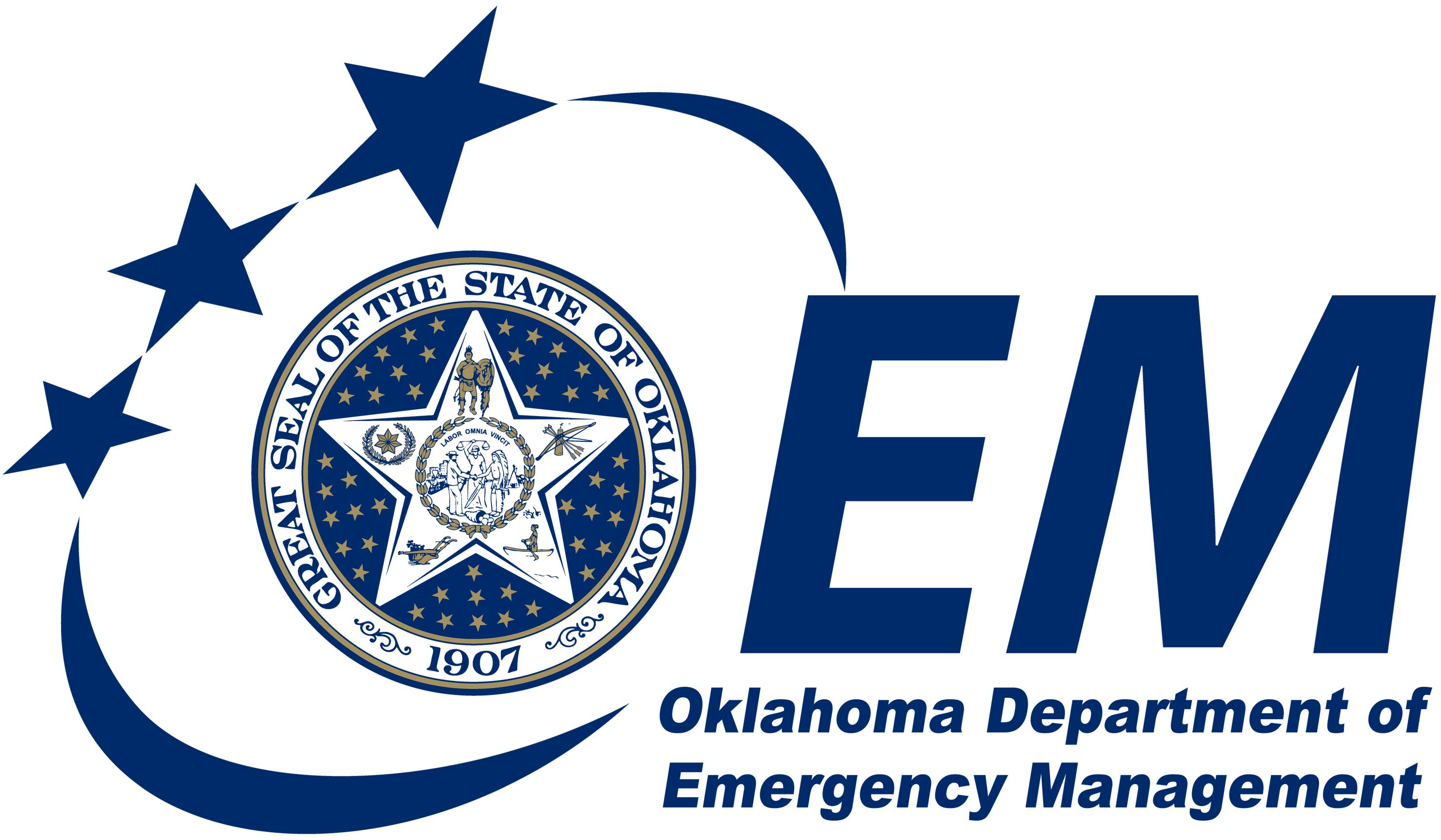With this week’s forecast calling for sleet, snow and freezing rain, now is a good time for Oklahomans to make sure they are prepared for winter conditions that could threaten their safety.
The Oklahoma Department of Emergency Management reminds Oklahomans that winter storms are deceptive killers because most deaths are indirectly related to the storm. This includes traffic accidents on icy roads, people dying from long exposure to the cold or carbon monoxide poisoning.
With winter weather comes the need to prepare your home, automobile and family to deal with the colder temperatures, as well as the possibility for snow and ice. It’s especially timely to review winter weather travel safety plans since more people will be on the road during the holiday period. Before setting out on a holiday trip make sure you have prepared your automobile. Packing blankets, emergency food and water, flashlights, a radio and cell phone with extra batteries will help you and your family, should you become stranded because of the weather.
If you must travel during a snow or ice event, allow extra time to reach your destination, and make sure you have plenty of fuel. Be particularly cautious on bridges and overpasses as they will be the first to freeze.
The chance of encountering road clearing equipment during the winter months is high as the Oklahoma Department of Transportation has some 500 trucks available statewide to clear the snow and ice. Motorists are advised to stay behind the trucks at least 200 feet and do not attempt to pass them as salting/sanding equipment is engaged often without warning.
It’s also important to remember to protect your home. Adding weather stripping and insulation, keeping furnaces clean and ready to use, and being aware of cold temperatures and vulnerable pipes that might freeze mark just some of the actions that can help prevent major and costly winter weather-related damage.
In recent years Oklahoma has been pounded with ice storms. In 2007, ice storms were responsible for more than 50 deaths and power outages to more than 640,000 homes and businesses across the state. Infrastructure damage to cities, towns and counties alone exceeded $230 million.
Winter weather watches and warnings will be issued by the National Weather Service (NWS) on NOAA Weather Radios and over radio and television stations so that Oklahoman’s can prepare to have a happy and safe holiday season.
Below are some winter weather preparedness tips. Citizens who would like more information on how to cope with winter weather should contact local emergency management offices in their area.
Be Aware
- Know what winter storm and blizzard watches and warnings mean.
- An NWS Winter Storm watch is a message indicating that conditions are favorable to a winter storm.
- An NWS warning indicates that a winter storm is occurring or is imminent.
- A blizzard warning means sustained winds or frequent gusts to 35 mph or greater and considerable falling or blowing snow are expected to prevail for a period of three hours or longer.
- Depend on your NOAA Weather Radio, along with local radio and television stations for weather reports.
Plan for a Winter Storm
- Develop a Family Disaster Plan for winter storms. Discuss with your family what to do if a winter storm watch or warning is issued. Everyone should know what to do in case all family members are not together when a winter storm hits.
- Understand the hazards of wind chill. A strong wind combined with a temperature of just below freezing can have the same effect as a still air temperature of 35 degrees or colder.
- Check on family, friends and neighbors, especially the elderly. Make sure they are prepared.
- Don’t forget about the pets. Make sure they have good food and water supplies and a place to seek shelter.
- Have your car winterized before winter storm season.
Protect Your Property
- Make sure your home is properly insulated. If necessary insulate walls and attic. Caulk and weather-strip doors and windowsills.
- Install storm windows or cover windows with plastic from the inside.
- To keep pipes from freezing, wrap them in insulation or layers of old newspapers. Cover the newspapers with plastic to keep out moisture.
- Let faucets drip a little to avoid freezing.
- Know how to shut off water valves.
- Consider storing extra heating fuel.
- Install and check smoke alarms.
- Keep safe emergency-heating equipment, such as a fireplace with wood. Always be cautious in using a portable space heater.
If you must go out during a winter storm:
- The best way to stay safe in a snowstorm is not to be out in it. Long periods of exposure to severe cold can result in frostbite or hypothermia. It is easy to become disoriented in blowing snow.
- Stretch before you do so. If you go out to shovel snow, do a few stretching exercises to warm up your body. This will reduce your chances of muscle injury.
- Avoid overexertion, such as shoveling heavy snow, pushing a car or walking in deep snow.
- Walk carefully on snowy, icy sidewalks. Slips and falls occur frequently in winter weather, resulting in painful and sometimes disabling injury.
- Dress in many layers and wear a hat and mittens or gloves.
- Come inside often for warm-up breaks.
- If you start to shiver or get very tired, or if your nose, fingers, toes, or ear lobes start to feel numb or turn very pale, come inside right away and seek medical assistance. These are the signs of hypothermia and frostbite and need immediate attention.
- Let someone know your destination, your route and when you expect to arrive.
- If you get stranded, stay with your vehicle and hang a brightly colored cloth (preferably red) on the radio antenna and raise the hood (after snow stops falling)
If you must drive in a storm:
- Check the local forecast through the media, which would announce closures, updates or locations to avoid
- Check for weather-related road conditions through the Oklahoma Department of Public SafetyMake sure you have plenty of fuel; a good rule of thumb is to keep your fuel tank at least half fullMake sure you have plenty of fuel; a good rule of thumb is to keep your fuel tank at least half full
- Always wear your seat belt
- In ice or snow, take it slow; allow ample time to reach your destination
- Bring a cell phone with an emergency roadside assistance number (In case of emergency, you can call the Oklahoma Highway Patrol at *55 or 911)
- Remember that bridges and ramps will be the first to freeze
Make sure your winter storm disaster supply kit includes:
- A cell phone with extra battery or two-way radio
- Windshield scraper and small broom for ice and snow removal
- Several blankets or sleeping bags
- Rain gear and extra sets of dry clothing, mittens, socks and a cap
- Non-perishable snacks like canned fruit, nuts and other high energy “munchies.” Include non-electric can opener if necessary.
- Several bottles of water. Eating snow will lower your body temperature. If necessary, melt it first.
- A small sack of sand or kitty litter for generating traction under wheels and a set of tire chains or traction mats.
- Jumper cables
- A first aid kit
- A flashlight with extra batteries
- A brightly colored cloth to tie to the antenna if you get stranded.
###


